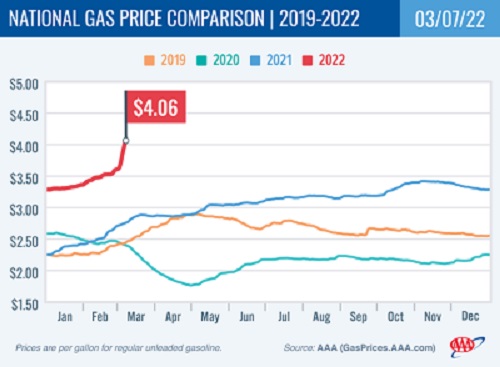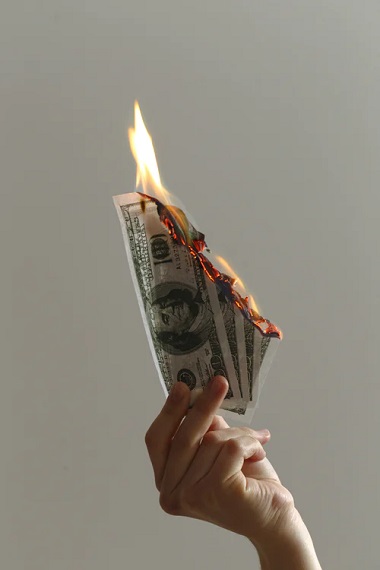Prices at the pump are what everybody’s talking about
Russia’s invasion of Ukraine and current US domestic energy policies have sent crude oil prices skyrocketing above $120/bbl, the highest price since July 2008. The high price for fuel is a concern around the nation.
The soaring oil prices have sent gas prices to new record highs, breaking records set in 2008. All 50 states are seeing dramatic increases in gas prices. For the week, the national average for regular jumps 54 cents to $4.17 a gallon.
The Oregon average shoots up 55 cents to $4.59.
A year ago the national average for diesel was $3.01 and the Oregon average was $3.05.
These prices eclipse the old record highs set in 2008 when the national average peaked at $4.11 on July 17, and the Oregon average peaked at $4.29 on July 3.
President Biden has finally announced a U.S. ban on Russian oil imports. The President said this has strong bipartisan support in Congress as Americans rally to support the Ukrainian people, and that this and other sanctions have effected the Russian economy.
But Biden says there will be costs as well here in the U.S., including even higher gas prices which continue to hurt American families.
The United Kingdom also announced it will phase out Russian oil imports by the end of the year. The European Union has also outlined a plan to stop using Russian energy at some point.
About 8% of oil used in the U.S. last year came from Russia, while about 25% of Europe’s oil is imported from Russia. The U.S. is the largest oil producer in the world. Other top producers are Saudi Arabia and Russia.

Last week, the International Energy Agency (IEA) announced a coordinated release of crude oil from its 31 member countries’ strategic reserves, including the U.S., Germany, Canada, South Korea, and Mexico, to help counter the impact of rising crude prices. On Friday, IEA said member states committed to releasing a total of 61.7 million bbl from their strategic reserves to reassure markets roiled by the fallout from Russia’s invasion of Ukraine.
This amount—half of which is expected to come from the U.S.—is the largest coordinated release since IEA was founded in 1974.
“Drivers are experiencing pain at the pumps, and its impossible to predict how high prices might go, as a war rages in Europe. Besides the tragic human toll, the Russian invasion of Ukraine is having economic consequences here at home and around the world,†says Marie Dodds, public affairs director for AAA Oregon/Idaho.
A D V E R T I S E M E N T

A D V E R T I S E M E N T
Traditionally, gas prices jump in March and April, as the switch to summer-blend fuels occurs and the spring and summer travel season heat up.
U.S. gasoline demand rose slightly from 8.66 million b/d to 8.74 million b/d. Total domestic gasoline stocks decreased by 500,000 bbl to 246 million bbl last week, according to the U.S. Energy Information Administration (EIA). The increase in gas demand and a reduction in total supply contribute to rising pump prices. But the major driver is rising oil prices.
Consumers can expect gas prices to keep climbing as long as crude prices rise.
--Bruce Armstrong| Post Date: 2022-03-08 15:24:28 | Last Update: 2022-03-08 17:30:12 |








